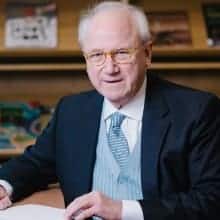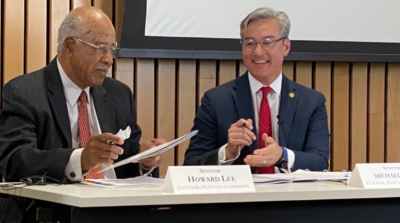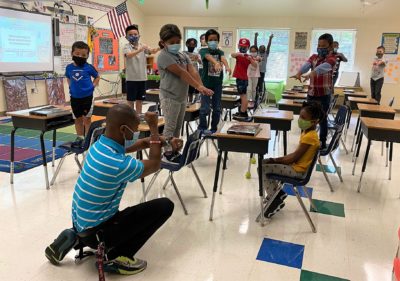
Share this story
- North Carolina responded to the Great Depression with a dramatic education reorganization in the 1930s. @FerrelGuillory draws parallels to the state’s opportunity to address today’s unique challenges.
- “Will North Carolina once again step up boldly to advance public education institutions?” asks @FerrelGuillory.
|
|
In the two decades I served on the UNC-Chapel Hill faculty, I found my students’ beginning-of-semester introductions both endearing and significant. North Carolina students would introduce themselves to me by saying, I’m from Charlotte, North Carolina … I’m from Atlantic Beach, North Carolina … Brevard, North Carolina … Eden, North Carolina … Edenton, North Carolina.
In Louisiana where I grew up, you would simply say, I’m from New Orleans, or Baton Rouge, or Bunkie, or Ponchatoula, or Breaux Bridge, or Lafayette — without specifying Louisiana. In contrast, North Carolina students almost invariably would locate themselves not only by their city, town, or county, but also explicitly in the state.
My students reinforced for me how much North Carolina matters as a source of identity and a political entity as well. In determining funding, taxing, and policies that affect day-to-day lives, state government matters a lot, especially so in public education.
Support for K-12 schools accounts for 40% of the General Fund; add in universities, community colleges, and child care, and the total comes to 60%.
“Historically, the state of North Carolina has provided funding for salaries and operations to the local school systems and the local units have been responsible for providing facilities,” says the 2022 Highlights of the North Carolina Public School Budget.
Embedded in that word “historically” is a story of how North Carolina dealt with an earlier inflection point to sustain public education. A key episode in the public structure of North Carolina came as the Great Depression was battering lives, the economy, and government revenues. Through the 1920s and into the ’30s, North Carolina was a largely rural state, with a mostly native-born population, rigid racial segregation, and rampant illiteracy among white and Black residents.
O. Max Gardner, a pro-business Democrat, handily won the 1928 governor’s race in an era of one-party dominance. (An exception to the rule arose in the presidential election, as North Carolina voters turned down Democrat Al Smith, a Catholic, anti-prohibition New Yorker, in favor of Republican Herbert Hoover.) In 1930, Gardner solicited the Brookings Institution, the venerable Washington think tank, for advice.
Brookings produced a sweeping governmental reorganization plan, much of which Gardner took to the Democratic-controlled legislature for hard-won approval in a grueling 1931 session. Lawmakers approved a shift from county-funded to state-funded roads, and they merged the campuses at Chapel Hill, Raleigh, and Greensboro into a consolidated University of North Carolina.
The dramatic public education reorganization stretched through the 1931 and 1933 legislative sessions. State government assumed responsibility for school operating costs, with counties retaining the role of providing facilities. The school term was extended from six to eight months, and the state began to provide funding for libraries and classroom supplies.
“The public school is basic in a civilization such as ours,” Gardner told legislators. “It is inherent in any scheme of democracy. It represents the state’s best effort to give all children an equal start in life.”
Clearly, certain notes ring down through the nine decades since Gardner’s governorship. For example, Judge David Lee and parties to the Leandro case turned to a national think tank — WestEd of California — for an analysis and an action plan much as Gardner turned to Brookings. Gov. Roy Cooper has fashioned his budget proposals along the lines of the comprehensive remedial plan that the judge promulgated.
The 1930s legislation also helps explain the fact that 80% of North Carolina counties still have county-wide school systems today. There may be no ideal size and configuration of school districts. Still, North Carolina large-area districts, with centralized funding for teachers, principals, and basic operations, give the state strengths in dealing with its educational challenges equitably in contrast to states with a patchwork of small districts dependent on local property taxes.
Of course, the North Carolina of the 1930s was a much different place than the North Carolina of the 2020s. That was then, this is now — a mega-state with 10.5 million people, clustered increasingly in major cities and suburbs, with a diverse higher-skill economy, and with its rural communities enduring difficult economic and demographic headwinds. While Gardner had to deal with internal Democratic factions, contemporary North Carolina is a sharply divided two-party state in a polarized nation.
Today’s inflection point may not appear as singular and striking as the Great Depression. Rather, a series of shocks over a decade or so — the Great Recession of 2008-09, an assault on the nation’s capital, the spread of disinformation online, and the trauma of a pandemic — combine to put state leadership to the test: Will North Carolina once again step up boldly to advance public education institutions that give sustenance to democracy and define its future?





